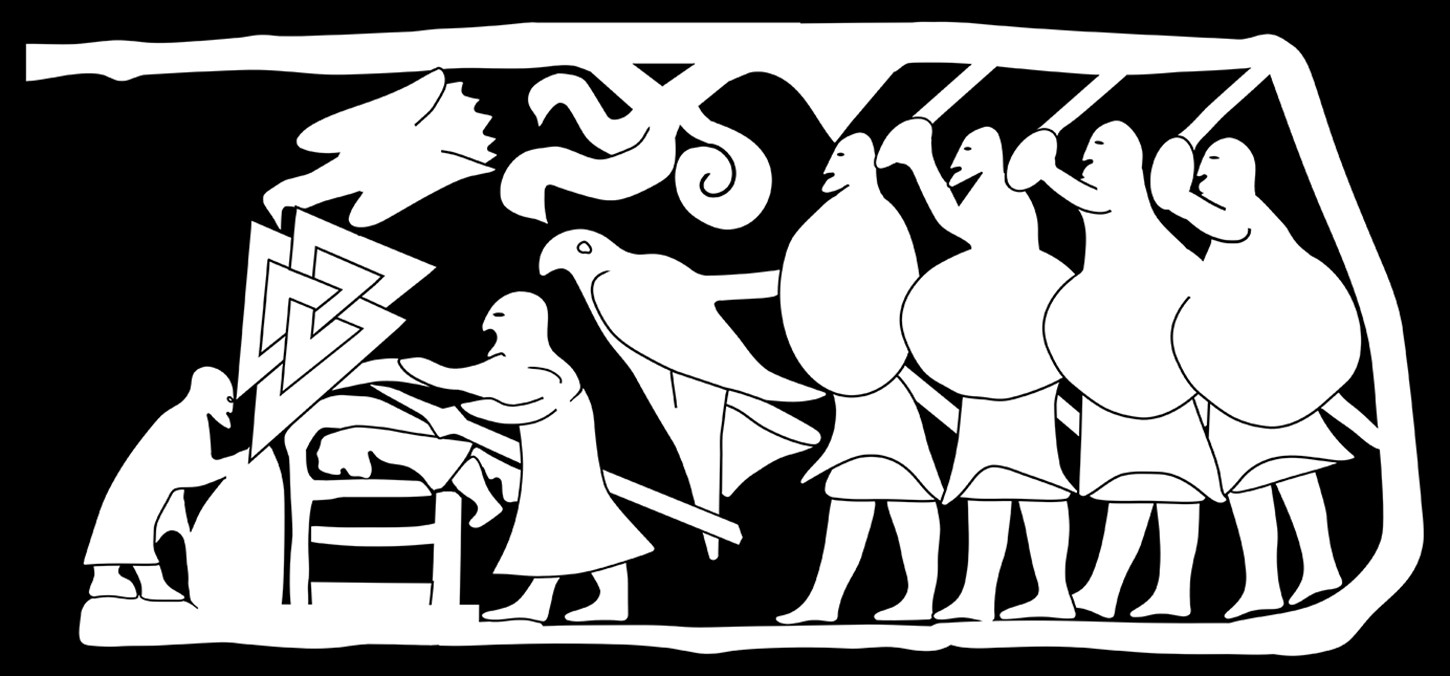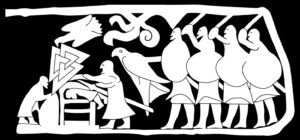Scarey movies, gore, Viking’s inflicting inhuman torture on captives… just the stuff the occult community laps up as greedily shown by the enthusiasm shown for the Swedish horror film Midsommar (if yr FB posts are to be believed) which depicted a modern Pagan community operating under the radar and undertaking a number of ancient ritual practices including the “Blood Eagle.” A recent paper by a team of British academics published by the University Of Chicago Press addressed this especially brutal manner of execution which was depicted in several mediaeval texts – but has yet to be substantiated by archaeological findings. It looks at the anatomical feasibility of perpetrating this atrocity.
Abstract
The infamous blood eagle ritual has long been controversial: did Viking Age Nordic people really torture one another to death by severing their ribs from their spine and removing their lungs, or is it all a misunderstanding of some complicated poetry? Previous scholarship on the topic has tended to focus on the details and reliability of extant medieval descriptions of the blood eagle, arguing for or against the ritual’s historicity. What has not yet been considered are the anatomical and sociocultural limitations within which any Viking Age blood eagle would have had to have been performed. In this article, we analyze medieval descriptions of the ritual with modern anatomical knowledge, and contextualize these accounts with up-to-date archaeological and historical scholarship concerning elite culture and the ritualized peri- and post-mortem mutilation of the human body in the Viking Age. We argue that even the fullest form of the blood eagle outlined in our textual sources would have been possible, though difficult, to perform, but would have resulted in the victim’s death early in proceedings. Given the context of the ritual depicted in medieval discourse, we also argue that any historical blood eagle would have existed as part of a wider continuum of cultural praxis, and been employed to secure the social status of the ritual’s commissioner following the earlier “bad death” of a male relative at the hands of the ritual’s victim.
Few aspects of Viking and medieval Scandinavian history have been as contentious as the blóðǫrn (“blood eagle”), a process of ritualized torture and execution allegedly carried out during the Viking Age (c. 750–1050) and said to involve the breaking of a victim’s ribs and the withdrawal of the lungs from the chest cavity, whereupon their fluttering would (allegedly) resemble an eagle’s wings. Accounts of the blood eagle appear in a range of medieval texts, the reliability of which has been the subject of some debate. Our aim in this article, however, is not to argue that the blood eagle did (or did not) take place during the Viking Age. Instead, we seek to offer a fresh perspective on the issue, employing an interdisciplinary approach in an attempt to establish whether or not the blood eagle could have taken place during the Viking Age. That is, would the performance of a blood eagle as outlined in medieval discourse have contravened anatomical or Viking Age sociocultural limitations, and can a greater understanding of physiological and cultural contexts help us better understand Viking Age torture practices?
https://www.journals.uchicago.edu/doi/10.1086/717332.
Thanks to Soror Amy for the tip!


